Eerie Japanese Internment Camp Photos
-
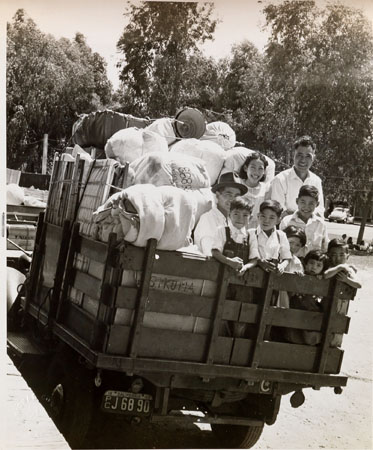 Photograph courtesy Swann Auction Galleries.
Photograph courtesy Swann Auction Galleries.Bon Voyage: Off to the Internment Camp
Why are these Japanese-Americans so happy? It’s July 13, 1942, seven months after Japanese planes bombed Pearl Harbor. The U.S. government has expelled these citizens from their California homes, and they’ll soon be shipped to a War Relocation Authority Project—i.e., an internment camp—surrounded by barbed wire and armed guards. Sound like fun?
The images in this slide show are part of an album of official photographs compiled by 1st Lt. Robert W. McKnight of the Northern California Sector of the Western Defense Command (a part of the U.S. Army). Some of the images in his collection were stamped (and thus likely captured) by the U.S. Signal Corps, the communications and information-networks arm of the U.S. Army, but many don’t feature a photographer credit line. They were sold by Swann Auction Galleries on Dec. 1, just days before the 70th anniversary of the Pearl Harbor bombing on Dec. 7. Rick Stattler, the Americana specialist at Swann, isn’t sure what the pictures were originally used for. “But looking through the images, it’s pretty clear that they were intended to put a positive spin on the internment process,” he says. He notes that the photograph above is particularly eerie: “Somehow the photographer got them to give big, cheery smiles, and it looks like they’re off on a camping trip,” he says. “The expression on their face is disconnected from what’s going on there.”
-
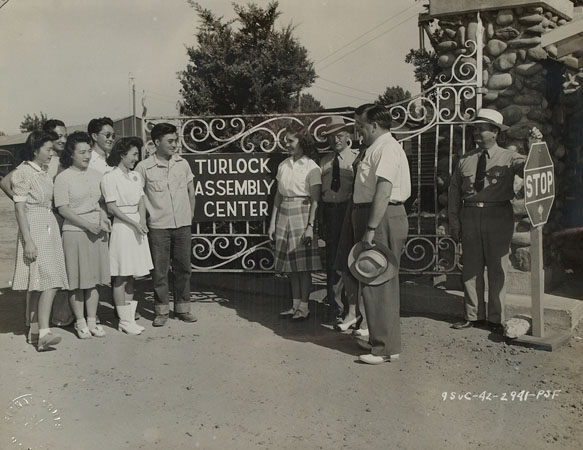 Photograph courtesy Swann Auction Galleries.
Photograph courtesy Swann Auction Galleries.Welcome Home: May 14, 1942
On Feb. 19, 1942, President Franklin D. Roosevelt signed Executive Order 9066, which laid the legal foundation for the forced evacuation and imprisonment of Japanese-Americans. The Navy began evacuating Japanese residents on Feb. 25. The Japanese were relocated to prevent espionage or sabotage (though not one Japanese-American was ever convicted of these charges). According to the original caption on this image, this group is the first arrival of evacuees from California’s Solano County at Turlock Assembly Center. The center housed a total of 3,699 evacuees from April 30, 1942, through Aug. 12, 1942. “It looks like a cheerful suburban subdivision,” Stattler says. “They look like they’re being greeted and given the keys to the community.”
-
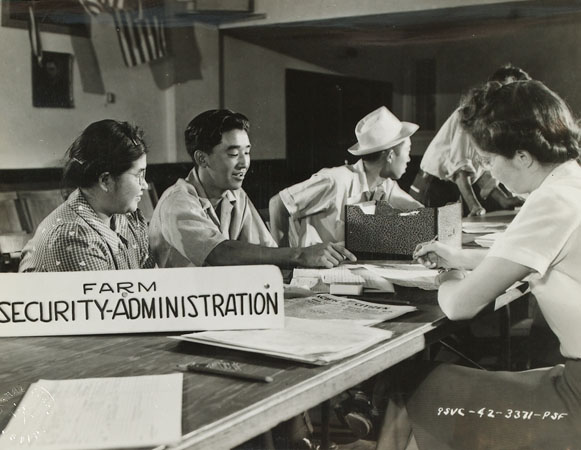 Photograph courtesy Swann Auction Galleries.
Photograph courtesy Swann Auction Galleries.Here, Take My Land: July 22, 1942
According to the original photo caption, these people are registering with the Farm Security Administration, which helped Japanese evacuees sell, rent, or lease the farm property they were forced to leave behind. “It’s a well-staged propaganda photo,” says Stattler. “[The man] looks like he’s signing up for a mortgage to buy a home, but he’s actually being forced to vacate his home. “
-
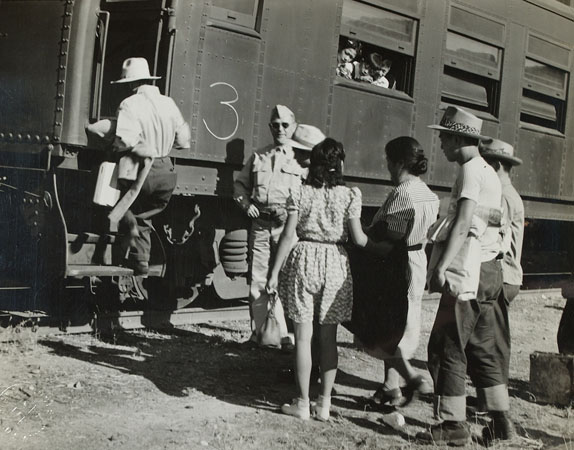 Photograph courtesy Swann Auction Galleries. CREDIT:
Photograph courtesy Swann Auction Galleries. CREDIT:All Aboard: July 16, 1942
These evacuees are headed for the Colorado River Relocation Project in Poston, Ariz., one of 10 relocation centers created to accommodate 10,000-20,000 people. Trains were “decrepit and sluggish, the only ones not transporting troops or other war support materials,” according to Beyond Words: Images from America’s Concentration Camps. “Black shades covered the train windows day and night.”
-
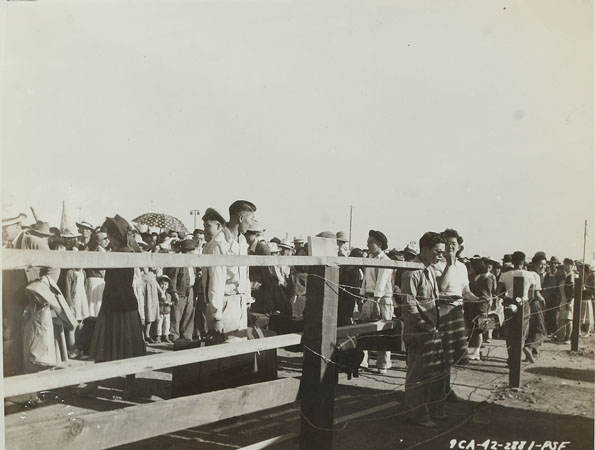 Photograph courtesy Swann Auction Galleries.
Photograph courtesy Swann Auction Galleries.So Long, Farewell: July 22, 1942
Whenever evacuees left a temporary assembly center like this one in Pinedale for a permanent incarceration camp, like the Tule Lake War Relocation Project, “almost the entire camp turned out to either help or watch the proceedings,” according to the photo’s original caption.
-
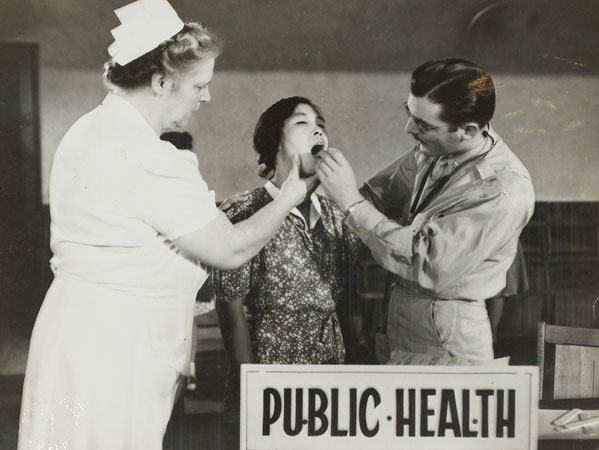 Photograph courtesy Swann Auction Galleries.
Photograph courtesy Swann Auction Galleries.Say “Ahhh”: July 25, 1942
“In reality,” says Stattler, “this is probably one of the more benign images. They actually did have some measures in place to look out for the internees’ health.” Still, the picture recalls for him old prints of slave auctions, where potential buyers would check a slave’s teeth before bidding. This image documents the physical examination given to every evacuee, according to the original caption.